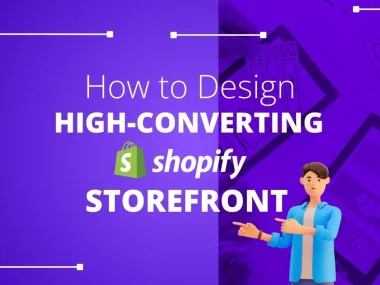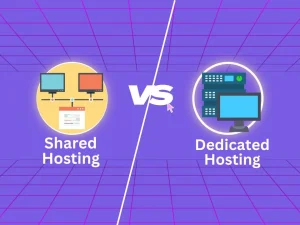Top Shopify marketing strategies include optimizing your store for SEO and leveraging social media advertising. Email marketing and influencer collaborations also drive traffic and boost sales.
Shopify is a powerful e-commerce platform, but driving traffic and increasing sales require strategic efforts. Start by optimizing your store for search engines to improve visibility. Social media advertising can target specific demographics, increasing potential customer reach. Email marketing remains effective for nurturing leads and encouraging repeat purchases.
Collaborating with influencers can introduce your brand to broader audiences, enhancing credibility and trust. Implementing these strategies consistently can result in significant growth in both traffic and sales for your Shopify store.
SEO Optimization
SEO Optimization is essential for driving organic traffic to your Shopify store. Effective SEO strategies can improve your search engine rankings and increase your sales. This section will cover key SEO tactics, including keyword research and on-page SEO, to help you optimize your Shopify store.
Keyword Research
Keyword research is the foundation of SEO. It involves identifying the terms and phrases potential customers use to find products. Use tools like Google Keyword Planner, SEMrush, and Ahrefs to find relevant keywords. Aim for a mix of short-tail and long-tail keywords for a balanced approach.
Here’s a simple table to help you categorize your keywords:
| Keyword Type | Example |
|---|---|
| Short-Tail Keywords | “shoes” |
| Long-Tail Keywords | “women’s running shoes size 8” |
Focus on keywords with high search volume and low competition. This strategy will increase your chances of ranking higher in search results.
On-page SEO
On-Page SEO involves optimizing individual pages to rank higher. Start with your title tags, meta descriptions, and headers. Ensure these elements include your target keywords.
Here are some On-Page SEO tips:
- Use descriptive title tags with keywords.
- Write engaging meta descriptions that include keywords.
- Use header tags (H1, H2, H3) to structure your content.
- Include alt text for images with relevant keywords.
Optimize your URLs by making them short and keyword-rich. For example, use “yourstore.com/womens-running-shoes” instead of “yourstore.com/product12345”.
Ensure your content is valuable and engaging. High-quality content keeps users on your page longer and reduces bounce rates. This can positively impact your search rankings.
Content Marketing
Content marketing is a powerful strategy to drive traffic and sales for your Shopify store. This approach involves creating valuable, relevant content to attract and engage your target audience. Below, we explore two key aspects of content marketing: Blog Posts and Video Content.
Blog Posts
Blog posts can significantly boost your Shopify store’s visibility. They help you reach new customers and retain existing ones. Here are some tips to maximize the impact of your blog posts:
- Use Keywords: Incorporate relevant keywords to improve your search engine ranking.
- Create Engaging Titles: Use catchy titles to attract readers.
- Write Quality Content: Provide valuable information that solves problems or answers questions.
- Include Images: Use images to make your posts visually appealing and easier to read.
- Promote Your Posts: Share your blog posts on social media to reach a wider audience.
Video Content
Video content is a highly engaging form of content marketing. Videos can help you connect with your audience on a deeper level. Here are some tips to create effective video content:
- Create Tutorials: Show your products in action with how-to videos.
- Share Customer Testimonials: Showcase satisfied customers to build trust.
- Make Product Demos: Highlight the features and benefits of your products.
- Use Social Media: Share your videos on platforms like YouTube and Instagram.
- Optimize for SEO: Use relevant keywords in your video titles and descriptions.
By implementing these content marketing strategies, you can increase traffic and sales for your Shopify store.
Social Media Marketing
Social media marketing can boost your Shopify store’s traffic and sales. It uses popular social platforms to engage with potential customers. This strategy is powerful and cost-effective.
Platform Selection
Selecting the right platform is crucial. Different platforms attract different audiences. Here are some popular options:
- Facebook: Great for reaching a broad audience. It supports various content types.
- Instagram: Ideal for visual products and younger audiences. Use high-quality images and videos.
- Twitter: Best for real-time engagement and trending topics. Share updates and quick news.
- Pinterest: Perfect for niche markets like crafts, fashion, and DIY. Use eye-catching pins.
- LinkedIn: Good for B2B marketing. Share professional and industry-related content.
Engagement Tactics
Engagement is key to social media success. Here are some effective tactics:
- Post Consistently: Regular posts keep your audience engaged. Use a content calendar.
- Use Hashtags: Hashtags increase visibility. Use relevant and trending hashtags.
- Run Contests: Contests generate excitement. They encourage shares and likes.
- Respond Promptly: Quick responses build trust. Engage with comments and messages.
- Share User-Generated Content: Showcase customer photos and reviews. This builds community.
Using these tactics can create a loyal customer base. It also drives more traffic to your Shopify store.
Email Marketing
Email marketing is an essential tool for boosting your Shopify sales. It allows you to reach customers directly. Effective email campaigns can drive traffic and increase conversions. Below, we discuss key strategies for successful email marketing.
List Building
Building an email list is the first step. You need a group of interested subscribers. Here are some ways to grow your list:
- Offer incentives like discounts or freebies.
- Use pop-ups on your website.
- Include a sign-up form in your checkout process.
Creating an engaging sign-up form is crucial. Make sure it’s simple and clear. Collecting too much information can deter potential subscribers.
Personalized Campaigns
Personalized campaigns can greatly increase engagement. Tailor your emails to individual preferences. Here are some tips for creating personalized campaigns:
- Segment your email list by purchase history.
- Use the recipient’s name in the subject line.
- Send product recommendations based on past behavior.
Personalization makes your emails more relevant. This can lead to higher open and click-through rates.
Influencer Collaborations
Influencer collaborations can dramatically boost your Shopify store’s visibility. By partnering with influencers, you can tap into their loyal follower base. This strategy not only increases traffic but also drives sales.
Finding Influencers
Start by identifying influencers who align with your brand. Look for influencers in your niche. Their followers should match your target audience. Use tools like BuzzSumo and HypeAuditor for research.
Check their engagement rates. High follower counts don’t always mean high engagement. Look for genuine interactions like comments and shares. Authentic engagement drives better results.
Campaign Execution
Once you find the right influencers, plan your campaign. Define your goals clearly. Do you want to increase sales or just traffic? Set measurable KPIs.
Create a content brief for the influencer. It should include key messages and product details. Give them creative freedom to maintain authenticity.
Track the campaign’s performance. Use unique discount codes or UTM parameters. These tools help measure the ROI of your influencer collaborations.
| Step | Action | Tool |
|---|---|---|
| 1 | Find Influencers | BuzzSumo, HypeAuditor |
| 2 | Check Engagement | Social Media Analytics |
| 3 | Plan Campaign | Google Sheets, Trello |
| 4 | Create Content Brief | Google Docs |
| 5 | Track Performance | Google Analytics, UTM Parameters |
Influencer collaborations can transform your Shopify marketing strategy. They help in reaching a wider audience organically. Start by finding the right influencers. Then, execute your campaign effectively. Measure your results to ensure success.
Paid Advertising
Paid advertising is a powerful tool for boosting your Shopify store’s traffic and sales. With the right strategies, you can reach a broader audience and drive more conversions. Two highly effective paid advertising methods are PPC campaigns and social media ads.
PPC Campaigns
Pay-per-click (PPC) campaigns are a great way to attract visitors. You only pay when someone clicks on your ad. This makes it cost-effective. Google Ads is a popular platform for PPC campaigns. You can target specific keywords related to your products.
Here are some tips for a successful PPC campaign:
- Keyword Research: Use tools like Google Keyword Planner.
- Ad Copy: Write compelling ad copy with clear calls to action.
- Landing Pages: Ensure landing pages are optimized for conversions.
A well-executed PPC campaign can drive qualified traffic and increase sales. Monitor your campaigns regularly to adjust bids and keywords for better results.
Social Media Ads
Social media ads are another excellent way to drive traffic. Platforms like Facebook, Instagram, and Pinterest offer targeted advertising options. You can reach users based on their interests and behaviors.
Consider these strategies for effective social media ads:
- Visual Content: Use high-quality images or videos.
- Audience Targeting: Define your target audience clearly.
- Ad Formats: Experiment with different ad formats like carousel and stories.
Engaging social media ads can capture attention and drive users to your store. Track performance metrics to refine your ads and improve ROI.
Customer Reviews
Customer reviews are a key part of any Shopify store. They influence buying decisions and build trust. Reviews can turn visitors into customers and boost sales.
Review Collection
Collecting reviews is the first step. Make it easy for customers to leave reviews. Here are some methods:
- Email Requests: Send follow-up emails after a purchase. Ask for a review.
- Incentives: Offer discounts or rewards for leaving a review.
- Review Apps: Use Shopify apps like Yotpo or Judge.me. They simplify the review process.
Leveraging Testimonials
Once you have reviews, use them effectively. Showcase them on your site. Here’s how:
- Highlight Positive Reviews: Display the best reviews on your homepage.
- Use Visuals: Add photos or videos to make testimonials more engaging.
- Social Proof: Share reviews on social media to build trust.
Customer reviews can significantly increase traffic and sales. They build credibility and trust. Implementing these strategies will help you make the most of customer feedback.
Analytics And Tracking
Understanding Analytics and Tracking is crucial for boosting traffic and sales on your Shopify store. By setting up proper analytics, you can monitor your store’s performance and make informed decisions. This section covers how to set up analytics and measure success effectively.
Setting Up Analytics
First, you need to set up analytics tools. These tools help track your store’s performance. Google Analytics is a popular choice. Follow these steps:
- Create a Google Analytics account.
- Get your tracking ID.
- Add the tracking ID to your Shopify store.
To add the tracking ID:
- Go to your Shopify admin panel.
- Click on Online Store and then Preferences.
- Paste your Google Analytics tracking ID in the field provided.
- Click Save.
Use other tools like Facebook Pixel and Hotjar for more insights.
Measuring Success
Measuring success helps you understand what works best. Key metrics to track include:
- Conversion Rate: Percentage of visitors who make a purchase.
- Average Order Value: Average amount spent per order.
- Customer Acquisition Cost: Cost to acquire a new customer.
- Traffic Sources: Where your visitors come from.
These metrics can be tracked using Google Analytics. Set up goals in Google Analytics to monitor conversions. Check the Acquisition section to see traffic sources.
Use the data to optimize your marketing strategies. Make changes based on what the data tells you. For example, if social media drives traffic, invest more in social media marketing.
Frequently Asked Questions
What Are Effective Shopify Marketing Strategies?
Effective Shopify marketing strategies include SEO optimization, email marketing, social media advertising, influencer partnerships, and content marketing. These tactics help increase traffic and boost sales.
How To Boost Shopify Store Traffic?
Boost Shopify store traffic by using SEO, social media promotions, email campaigns, and targeted ads. Quality content also attracts visitors.
Why Is Seo Important For Shopify?
SEO is crucial for Shopify because it improves search engine rankings. Higher rankings lead to increased visibility and more organic traffic.
How Can Email Marketing Increase Shopify Sales?
Email marketing can increase Shopify sales by targeting customers with personalized offers, abandoned cart reminders, and product updates. It’s cost-effective and direct.
Conclusion
Boosting traffic and sales on Shopify requires smart marketing strategies. Implement these tips to see significant growth. Focus on your audience, use SEO, and engage with customers. Consistent effort will lead to success. Stay updated with trends to keep your store competitive.
Your business will thrive with the right approach.











